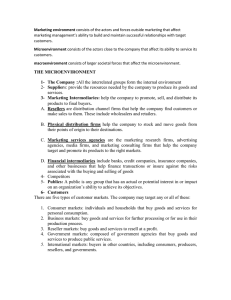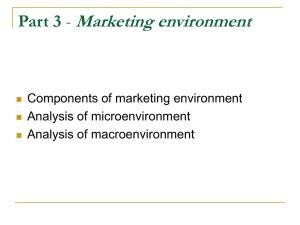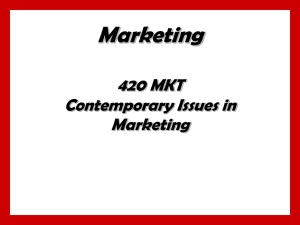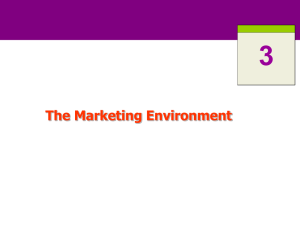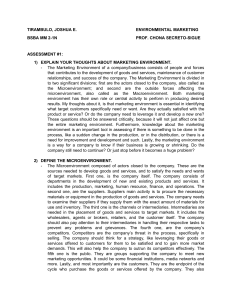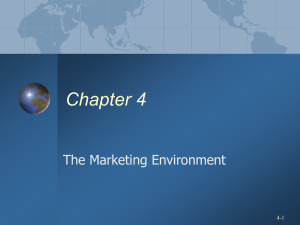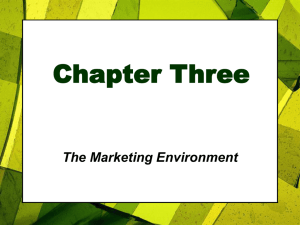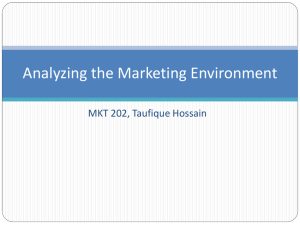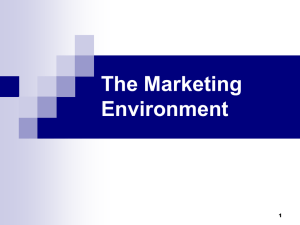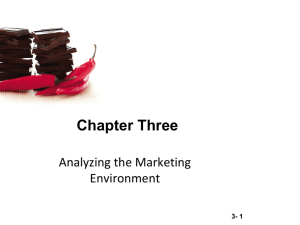Global Edition Chapter 1
advertisement
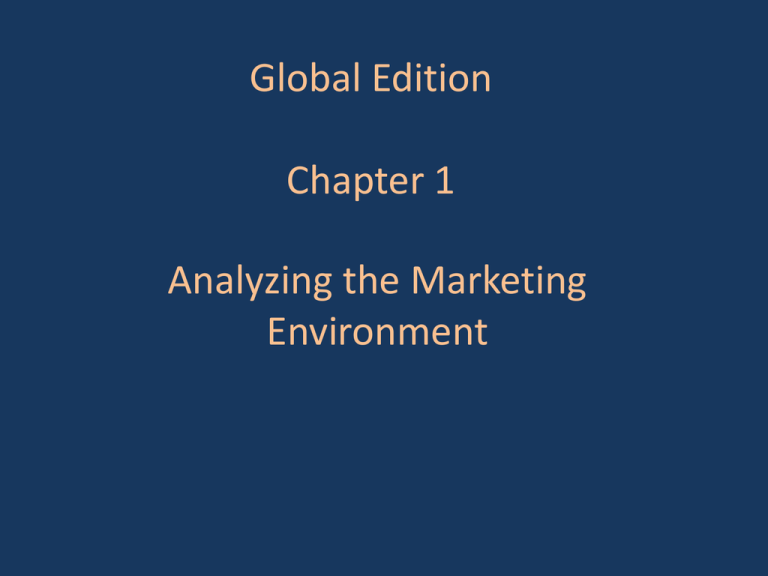
Global Edition Chapter 1 Analyzing the Marketing Environment Analyzing the Marketing Environment • Microenvironment • Macroenvironemnt – – – – – – Demographic Environment Economic Environment Natural Environment Technological Environment Political and Social Environment Cultural Environment The Marketing Environment The marketing environment includes the actors and forces outside marketing that affect marketing management’s ability to build and maintain successful relationships with customers The Marketing Environment Microenvironment consists of the actors close to the company that affect its ability to serve its customers, the company, suppliers, marketing intermediaries, customer markets, competitors, and publics The Company’s Microenvironment Actors in the Microenvironment The Company’s Microenvironment • The Company : All the interrelated groups form the internal environment • Suppliers: provide the resources needed by the company to produce its goods and services. • Marketing Intermediaries: help the company to promote, sell, and distribute its products to final buyers. The Company’s Microenvironment • Resellers are distribution channel firms that help the company find customers or make sales to them. These include wholesalers and retailers. A. Physical distribution firms help the company to stock and move goods from their points of origin to their destinations. B. Marketing services agencies are the marketing research firms, advertising agencies, media firms, and marketing consulting firms that help the company target and promote its products to the right markets. C. Financial intermediaries include banks, credit companies, insurance companies, and other businesses that help finance transactions or insure against the risks associated with the buying and selling of goods The Company’s Microenvironment • Competitors • Publics: A public is any group that has an actual or potential interest in or impact on an organization’s ability to achieve its objectives The Company’s Microenvironment • Customers There are five types of customer markets. The company may target any or all of these: 1. Consumer markets: individuals and households that buy goods and services for personal consumption. 2. Business markets: buy goods and services for further processing or for use in their production process. 3. Reseller markets: buy goods and services to resell at a profit. 4. Government markets: composed of government agencies that buy goods and services to produce public services. 5. International markets: buyers in other countries, including consumers, producers, resellers, and governments. The Company’s Macroenvironment The Company’s Macroenvironment 1. Demographic Environment: Demography is the study of human populations in terms of size, density, location, age, gender, race, occupation, and other statistics 2. Economic Environment : The economic environment consists of factors that affect consumer purchasing power and spending patterns • Industrial economies constitute rich markets for many different kinds of goods. • Subsistence economies consume most of their own agricultural and industrial output, and offer few marketing opportunities. • In between are developing countries, which can offer outstanding marketing opportunities. The Company’s Macroenvironment 3. The Natural Environment : the natural environment involves the natural resources that are needed as inputs by marketers, or that are affected by marketing activities. 4. Technological Environment: The technological environment is perhaps the most dramatic force now shaping our destiny. 5. The Political and Social Environment: Marketing decisions are strongly affected by developments in the political environment. This consists of laws, government agencies, and various pressure groups 6. The Cultural Environment : The cultural environment consists of institutions and other forces that affect a society’s basic values, perceptions, preferences, and behaviors.
